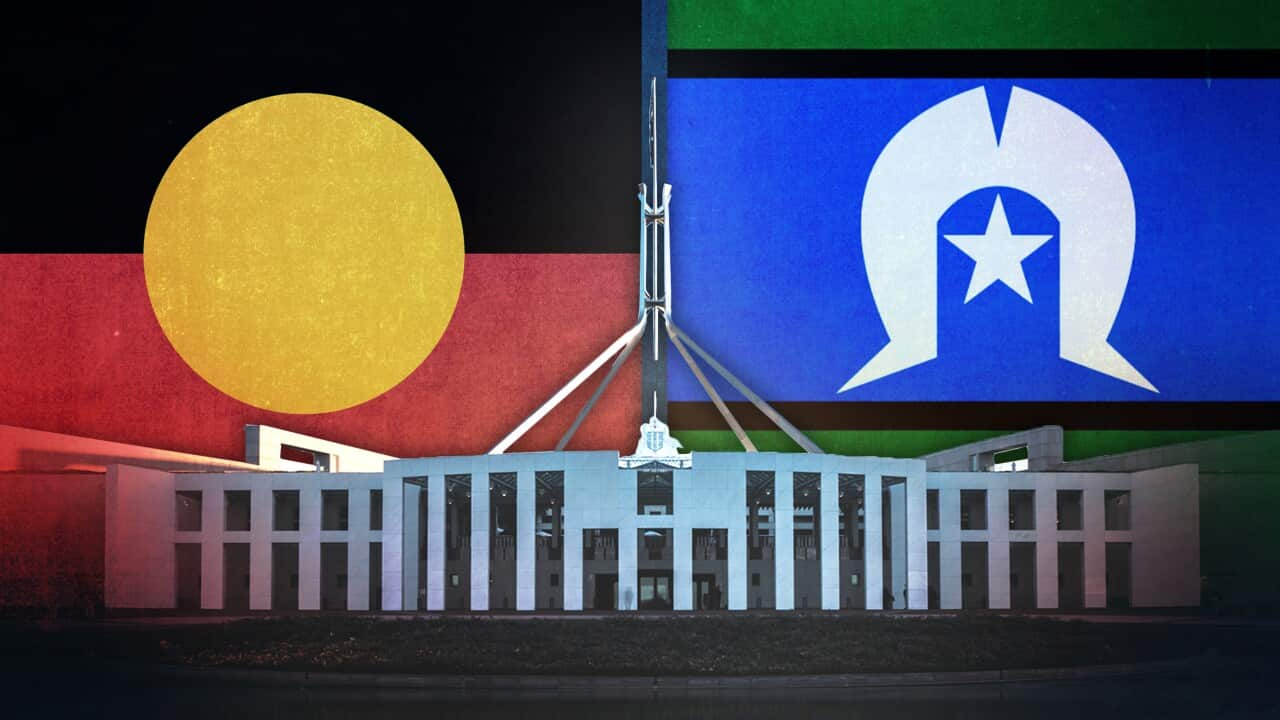KEY POINTS:
- The 2017 Uluru Statement from the Heart first called for an Indigenous Voice to Parliament.
- Australians will vote on 14 October in the country's first referendum in a generation.
- Where did the claim of a 26-page Uluru Statement come from?
The 2017 Uluru Statement from the Heart set in motion a series of events leading to Australia's first referendum in a generation.
Prime Minister Anthony Albanese's first words on election night in May last year were a commitment to the document "in full", and he took the first step to fulfilling that pledge by announcing a .
The Statement widely seen by Australians is a single-page, 439-word call for a Voice to be enshrined in the constitution.
"In 1967 we were counted, in 2017 we seek to be heard. We leave base camp and start our trek across this vast country. We invite you to walk with us in a movement of the Australian people for a better future," it concludes.
But about a month ago, claims started to circulate in conservative media - echoed in questions from the federal Opposition - that the Uluru Statement actually sprawls over more than 20 pages, with a much broader agenda.
Deputy Liberal leader Sussan Ley claimed an authorised official history of the Statement, written by Uluru Dialogue co-chairs Megan Davis and Pat Anderson, said it was 15 pages.
"Does the prime minister still maintain the Uluru Statement is just one page, and that any suggestions otherwise are conspiracy theory and nonsense?" she asked on Tuesday.
Davis and Anderson have insisted the Statement is one page, and Albanese accused the Coalition of deliberately misleading voters.
"They say people are confused, but they try to add to every bit of confusion with what is an utter untruth, that they know is totally untrue," he said.
So where did that claim come from?
How was Uluru Statement from the Heart written?
The Uluru Statement from the Heart was the result of a years-long consultation process with Indigenous communities across Australia - known as the Uluru Dialogues - which culminated in the 2017 Uluru Summit.
There, delegates settled on a model of constitutional recognition of Indigenous Australians which included the Voice.
It also called for the Voice to be followed by truth-telling about Australia's history, and a process for treaty-making (though it does not specify a national treaty).
While more than 250 Aboriginal and Torres Strait Islander leaders attended the Uluru Summit, opponents of the Voice have insisted the Statement does not reflect the wishes of Indigenous peoples as a whole.
Why is the length of the Statement controversial?
In August, Sky News host and Voice opponent Peta Credlin sparked a controversy over the Statement's length.
Credlin, who was former prime minister Tony Abbott's chief of staff, broadcast the National Indigenous Australians Agency's (NIAA) response to a freedom of information (FOI) request, which produced a document - labelled Document 14.
That included and 25 additional pages detailing broader consultations during the lead-up to its publication. Credlin focused on those pages, which made reference to reparations and the invasion of Botany Bay.
Everything released via that FOI request had been publicly available online since 2017.

Uluru Dialogue co-chairs Pat Anderson and Megan Davis, who co-wrote the Statement, have rejected the claims. Source: AAP / Ben Fry/PR IMAGE
She also aired audio of Uluru Statement co-author Megan Davis previously suggesting the document was longer than a single page.
"A very powerful part of the Uluru Statement from the Heart is that it isn't just the first one-page statement. It's actually a very lengthy document, of about 18 to 20 pages," Davis said in 2018.
Davis quickly took to X, the platform formerly known as Twitter, to clarify that her comments were referring to the Referendum Council report - a separate document.
"That's the official report. The Uluru Statement is one page," she said.
Anderson, a fellow co-architect of the Uluru Statement, also refuted the claim.
“Let me explain first of all, the Uluru Statement from the Heart is a one-pager, it’s 439 words,” she told the ABC.
“Attached to that is pages called Our Story. What is recorded there is our version of history. And yes, as you do in these kinds of reports, we recorded everything that people said."
Coalition Indigenous Australians spokesperson Jacinta Nampijinpa Price also claimed the NIAA had given her "verbal confirmation" that the Statement was 26 pages.
She was swiftly rebuked in a letter from NIAA chief executive Jody Broun.
"The additional pages contained in Document 14 ... are background and excerpts drawn from the regional dialogues. The NIAA did not provide verbal clarification that the Uluru Statement from the Heart document is 26 pages long," she wrote.
Price said that put Broun at odds with her own FOI team.
Does it actually matter?
Arguably not.
Albanese has committed Labor to the Uluru Statement "in full", but has been very clear on what he means by that: one page.
"[It is] an extraordinary concise, uplifting Uluru Statement from the Heart. On one page, a single page, a gracious invitation to non-Indigenous Australia to advance our country," he said in August.
Albanese dismissed the claim as a "conspiracy theory" when it was raised repeatedly by the Coalition last month.
"[This is a] QAnon of a theory ... We have all sorts of conspiracy stuff out there, but this is a ripper," he said.
Stay informed on the 2023 Indigenous Voice to Parliament referendum from across the SBS Network, including First Nations perspectives through NITV.
Visit the to access articles, videos and podcasts in over 60 languages, or stream the latest news and analysis, docos and entertainment for free, at the










